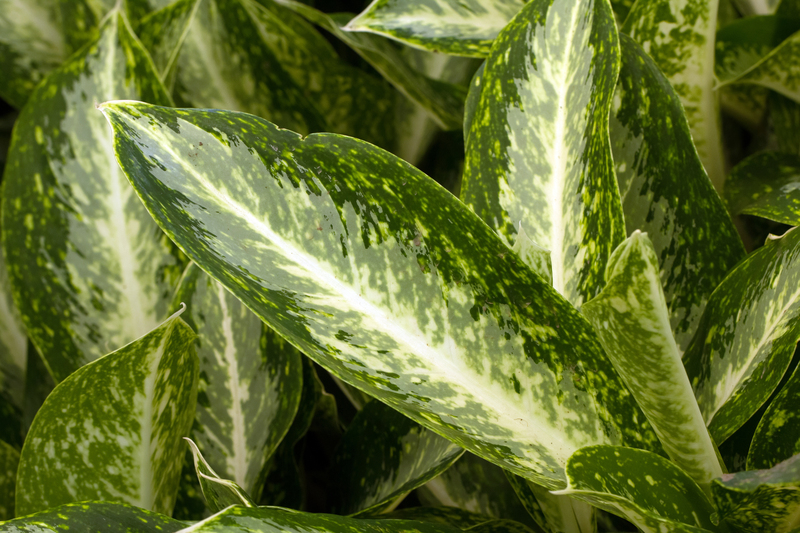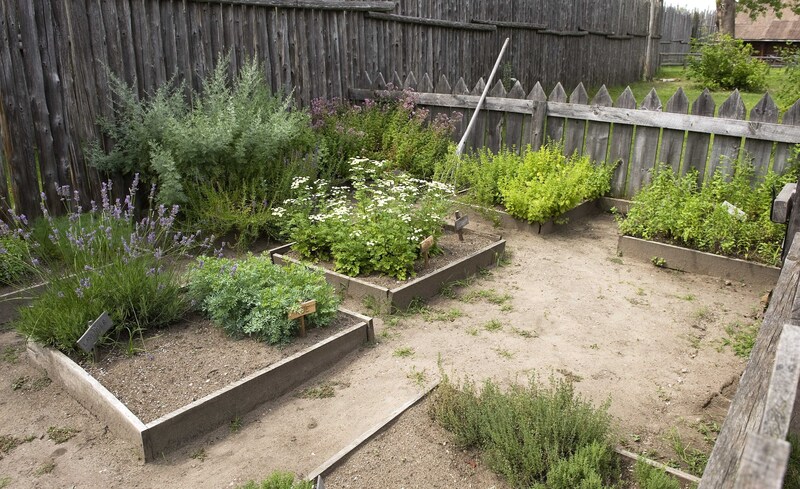Revitalizing Soil with Organic Waste Conversion
Posted on 28/09/2025
Revitalizing Soil with Organic Waste Conversion: A Sustainable Approach
In today's era of environmental consciousness, the need for sustainable agricultural practices has reached a crucial stage. Revitalizing soil with organic waste conversion is emerging as a highly effective solution to address soil degradation, enhance crop yield, and minimize waste. This article dives into how converting organic waste into soil amendments plays a pivotal role in rebuilding fertile land, supporting eco-friendly gardening, and promoting global sustainability.
What is Organic Waste Conversion?
Organic waste conversion refers to the biochemical process whereby organic matter--such as kitchen scraps, crop residues, farmyard manure, and even industrial green waste--is decomposed and transformed into nutrient-rich soil amendments like compost, vermicompost, or biochar. Through this transformation, nutrients locked in waste are recycled back into the soil ecosystem, closing the natural nutrient cycle.
- Kitchen waste includes fruit and vegetable peels, coffee grounds, eggshells, and other biodegradable leftovers.
- Yard and garden waste such as grass clippings, leaves, and plant trimmings are rich in organics.
- Farm animal manure contributes nitrogen, phosphorous, and beneficial microbes.
- Industrial green waste like brewery residues, paper, and certain food processing byproducts can be composted with proper care.
Why Revitalize Soil?
Modern agricultural practices, excessive use of chemical fertilizers, and over-cultivation have led to severe soil degradation worldwide. The consequences are declining soil fertility, loss of soil structure, erosion, and decreased agricultural productivity. Rejuvenating soil with organic materials not only restores its health but also enriches the ecosystem.

Benefits of Soil Revitalization through Organic Waste Transformation
- Improved Soil Structure: Compost and other organic amendments enhance soil texture, making it more friable and suitable for root growth.
- Enhanced Water Retention: Organics improve soil's moisture holding capacity, reducing irrigation needs and safeguarding crops during drought.
- Nutrient Cycling: The conversion process releases essential macronutrients (N, P, K) and micronutrients for healthy plant growth.
- Enriched Microbial Life: Organically enriched soils are teeming with beneficial bacteria, fungi, and earthworms, further supporting plant health.
- Reduction in Chemical Inputs: By supplying natural nutrients, there's reduced reliance on chemical fertilizers, which often degrade soil quality over time.
- Greenhouse Gas Mitigation: Diverting organic waste from landfills reduces methane emissions, a potent greenhouse gas.
- Waste Minimization: Recycling food and yard waste at home or across communities keeps organic material out of disposal streams.
Key Organic Waste Conversion Techniques
Discovering the potential for soil revitalization with recycled organic matter involves understanding different conversion techniques. Here are the most common and effective methods:
1. Composting
Composting is the aerobic decomposition of organic material by microorganisms. It produces dark, crumbly compost that improves soil fertility. Common composting methods include:
- Backyard composting with heaps, bins, or tumblers
- Community-scale composting for neighborhoods or urban gardens
- Vermicomposting, a specialized method using earthworms to rapidly convert food scraps into high-quality organic matter
2. Bokashi Fermentation
The Bokashi method relies on fermenting kitchen waste using specialized microbial inoculants in airtight containers. This process is quick, minimizes odor, and produces a pre-compost material that can be buried directly in the soil to decompose.
3. Anaerobic Digestion
Anaerobic digestion is mainly used in industrial and farm settings. In the absence of oxygen, microbes break down organic residues, generating biogas (a sustainable energy source) and nutrient-rich digestate suitable for soil application.
4. Biochar Production
Biochar is produced by pyrolyzing organic waste at high temperatures with limited oxygen. It's an excellent soil amendment, improving nutrient retention, water management, and carbon sequestration in soil ecosystems.
5. Green Manuring
Green manures are cover crops grown primarily to be plowed under before maturity. This infuses the soil with fresh organic material, encourages microbial biomass, and fixes atmospheric nitrogen where leguminous crops are used.
The Science Behind Soil Revitalization with Organic Amendments
The magic of converting organic waste to improve soil fertility lies in the synergy between physical, chemical, and biological processes:
- Physical Improvements: Organic matter increases soil porosity, reduces compaction, and enhances aeration.
- Chemical Benefits: It improves cation exchange capacity, allowing soils to retain nutrients longer. Decomposition also buffers soil pH.
- Biological Activity: A thriving micro-ecosystem of bacteria, fungi, protozoa, and invertebrates transforms residues into humus and supports plant immunity.
These processes result in robust, living soils capable of supporting resilient agricultural systems and abundant harvests.
Organic Waste Suitable for Soil Revitalization
A wide array of organic wastes can be channeled into soil enhancement through organic conversion. However, not all waste materials are suitable. Here's a guide on what to include and what to exclude:
Acceptable Organic Wastes:
- Fruit and vegetable scraps
- Coffee grounds and tea bags
- Eggshells
- Yard trimmings (grass, leaves, branches)
- Manure from herbivores (cows, horses, rabbits, chickens)
- Shredded cardboard and uncoated paper
- Straw, hay, and wood chips (in moderation)
Materials to Exclude:
- Meat and dairy products (attract pests, create odor)
- Fats and oils
- Pet waste from carnivores
- Diseased plants or invasive weeds
- Highly processed foods with additives
- Glossy or plastic-coated paper
Practical Steps: How to Revitalize Soil with Organic Waste at Home
You don't need a large farm to start improving soil with organic waste recycling. Follow these simple steps to launch your home composting project:
- Set Up a Compost Area: Use a bin, pile, or tumbler in your yard or balcony. Ensure the spot has good drainage and is easily accessible.
- Layer Greens and Browns: Alternate "green" nitrogen-rich waste (fruit peels, grass clippings) with "brown" carbon sources (dried leaves, shredded paper) for balanced composting.
- Monitor and Manage Moisture: Compost should feel like a wrung-out sponge; not too dry or soggy. Sprinkle water in dry weather, and cover during rain.
- Turn the Pile: Aerate by mixing the heap every few weeks. This introduces oxygen and speeds up decomposition.
- Harvest Your Compost: After several months, the material becomes dark, crumbly, and earthy-smelling--perfect for garden application.
Use finished compost as a top dressing, mix it into planting beds, or blend into potting soil. Each batch returns vital nutrients and beneficial microbes to your soil, fostering healthier plants and more resilient landscapes.
Tips for Effective Organic Waste Conversion
- Chop larger items into smaller pieces to expedite decomposition.
- Add a handful of garden soil or finished compost to inoculate microbes.
- Avoid excess citrus, onions, or large quantities of bread, which can slow composting.
- If your compost is smelly, add more "brown" material or turn the pile for aeration.
Scaling Up: Community and Industrial Organic Waste Conversion
While home composting is powerful, large-scale organic waste conversion is essential for tackling citywide or agricultural waste streams. Many urban centers, farms, and businesses are embracing:
- Municipal compost facilities that collect residential food and yard scraps
- Industrial vermicomposting to process tons of food industry byproducts
- Anaerobic digesters generating biogas for energy and nutrient-rich digestate for fields
- On-farm composting integrating crop residues and livestock manure for sustainable fertility management
These initiatives reduce landfill pressure, create green jobs, and provide communities with locally-produced compost for parks, gardens, and agriculture.
Soil Health and Sustainable Development Goals
Revitalizing soil with organic waste conversion directly supports several United Nations Sustainable Development Goals (SDGs), including:
- Zero Hunger (SDG 2): Improved soils mean increased food production and greater food security.
- Responsible Consumption and Production (SDG 12): Recycling organics closes material loops, promoting circular economies.
- Climate Action (SDG 13): Reduced landfill waste = fewer greenhouse gas emissions; healthy soils sequester more carbon.
- Life on Land (SDG 15): Replenished soils support biodiversity both above and below ground.
Overcoming Barriers and Looking Ahead
Despite the clear advantages, challenges remain in revitalizing land through organic waste utilization. Barriers include:
- Lack of public awareness and training
- Space and time constraints, especially in urban settings
- Importation of contaminants (plastics, pesticides) with raw organics
- Regulation and quality assurance of commercial composts
Ongoing research and innovation are developing new solutions for efficient and safe organic waste conversion--from enhanced microbial inoculants to digitized waste collection and home composting machines. Education campaigns and policy support are also critical to encouraging widespread adoption.

Conclusion: A Greener Tomorrow Starts with Living Soil
Healthy, living soil is the foundation of resilient ecosystems and abundant harvests. By embracing organic waste recycling for soil revitalization, individuals and communities can turn waste into wealth, reduce environmental footprints, and help restore the planet's fertility.
Whether you are a home gardener, teacher, farmer, or policymaker, the journey to rebuilding soil health with organic amendments starts today. Let's work together to keep organic resources flowing, support thriving soils, and cultivate a more sustainable and productive world for generations to come.
Frequently Asked Questions: Revitalizing Soil with Organic Waste
- How long does it take to produce usable compost from kitchen waste?
Typically, a well-managed compost pile produces finished compost in 2-6 months, depending on conditions and materials. - Can compost replace all chemical fertilizers?
Compost supplies many nutrients and improves soil properties, but in some intensive farming systems, targeted mineral fertilizer may still be needed for maximum yield. However, compost reduces chemical needs significantly. - Is composting safe near edible crops?
Yes, when done correctly. Ensure compost is fully broken down ("cured") before adding to vegetable beds to avoid plant stress and pathogens. - Are there alternatives for those without outdoor space?
Absolutely! Indoor worm bins (vermicomposting) and bokashi systems are excellent for apartments and small homes.
Experience firsthand the transformation--revitalize your soil, reduce waste, and nurture a more sustainable future with organic waste conversion!

